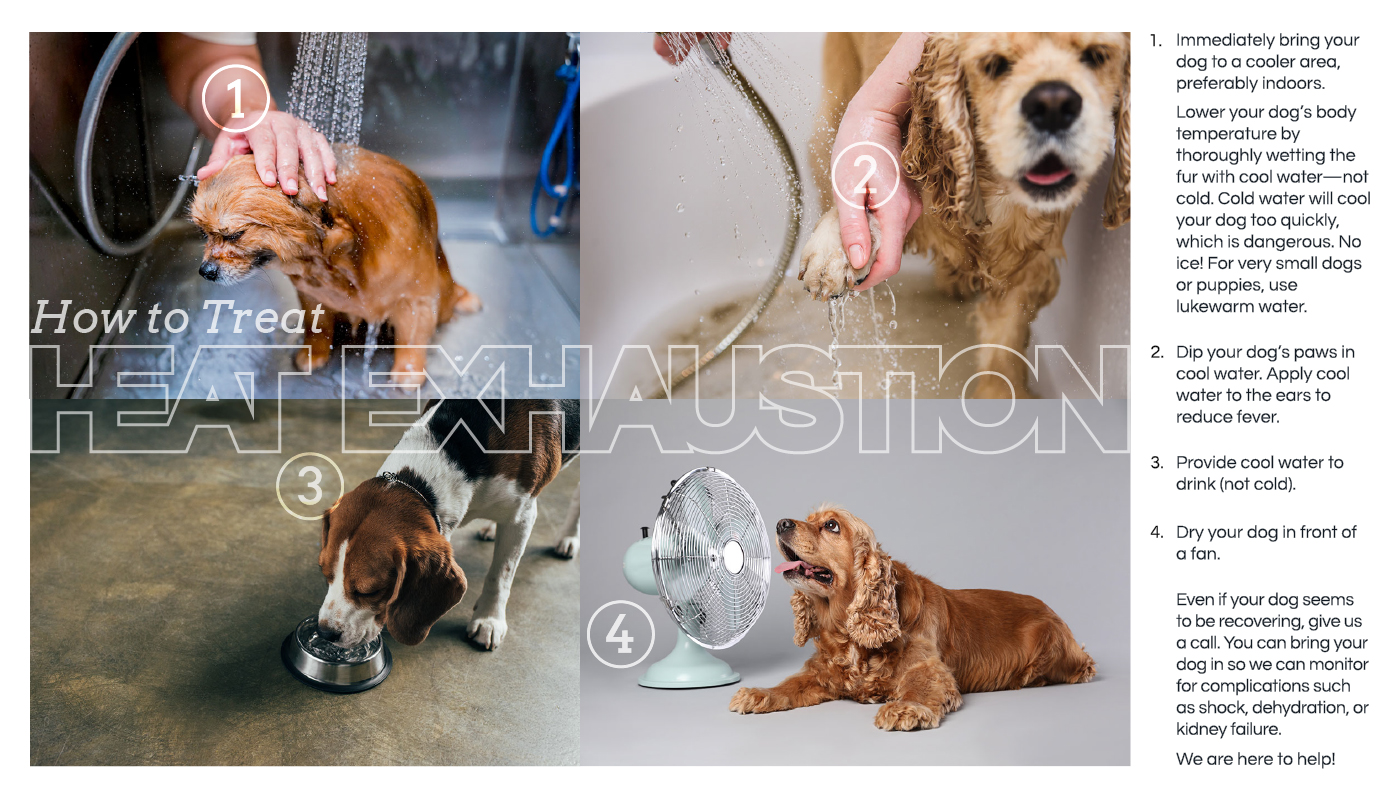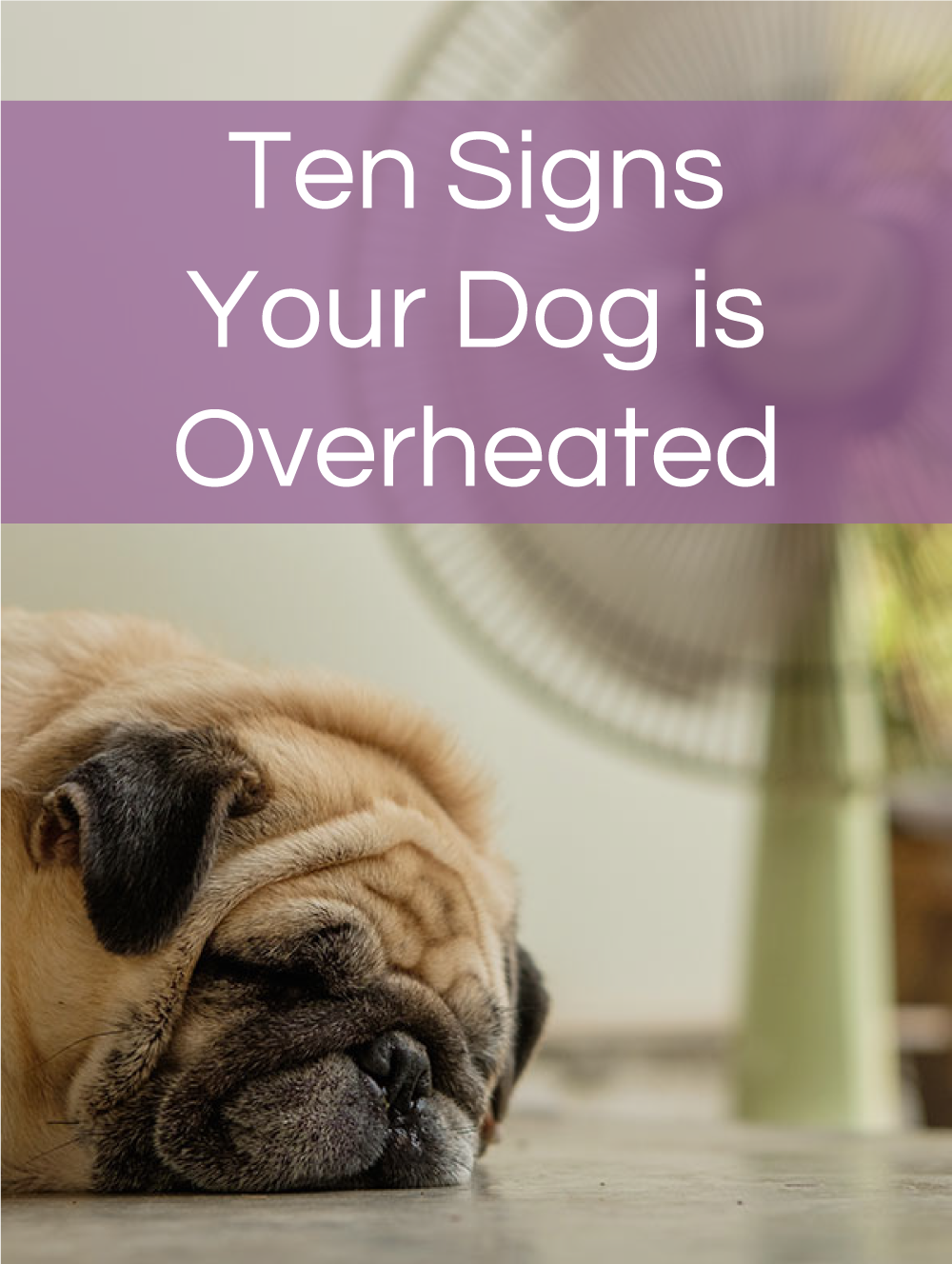
1. Excessive Panting/Difficulty Breathing
Dogs cool themselves off through panting. If your dog is panting more than usual, take note. Dogs who have flat faces like French bulldogs and pugs are more susceptible to quickly overheating because they cannot pant as efficiently.
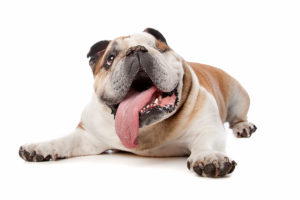
2. Dehydration
Look for a dry nose, visible tiredness, excessive panting, and sunken eyes. Make sure your dog has fresh water accessible.
3. Excessive Drooling
Is your dog drooling more than usual? Is the drool thicker and stickier than usual? Your dog may be overheated.
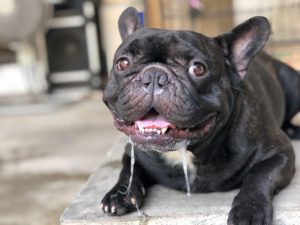
4. Gum Changes
Are the gums dry, tacky, or sticky? This can be a sign of dehydration.
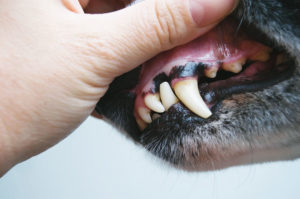
5. Fever
A fever can lead to a nose that is dry and hot, instead of wet and cool. A body temperature above 103°F is considered abnormal.
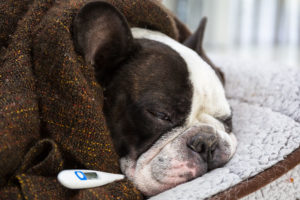
6. Lack of Urine
If your pet has trouble producing urine or is peeing a darker color, dehydration could be the cause.
7. Rapid Pulse
A normal pulse rate depends on the dog’s size (bigger dogs tend to have slower pulses, while small dogs and puppies have very quick pulses). To take a dog’s pulse, place your hand on the chest near the front elbow joint. If the pulse seems more elevated than usual, the dog may be overheated.
8. Tremors
If your dog shivers or shakes on a hot summer day, heat exhaustion may be the cause. (See tips below)
9. Weakness/Lethargy/Dizziness
Is your dog having trouble standing up or walking? Is your dog napping much more than usual? Does your dog seem lightheaded? These are serious symptoms of being overheated.

10. Vomiting or Diarrhea
Check your dog’s stool to see if it is abnormally soft or has blood in it. Please contact us if these symptoms occur.

